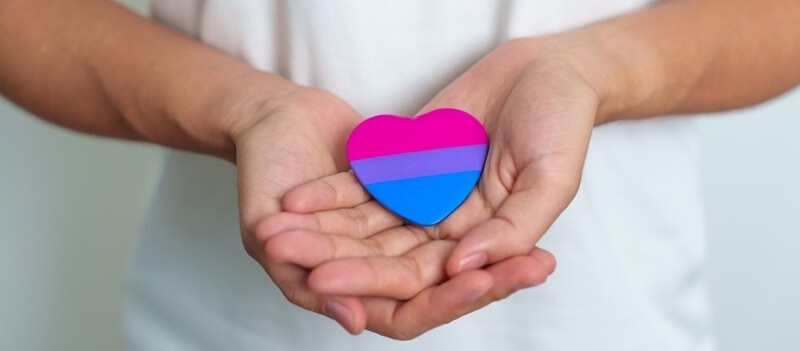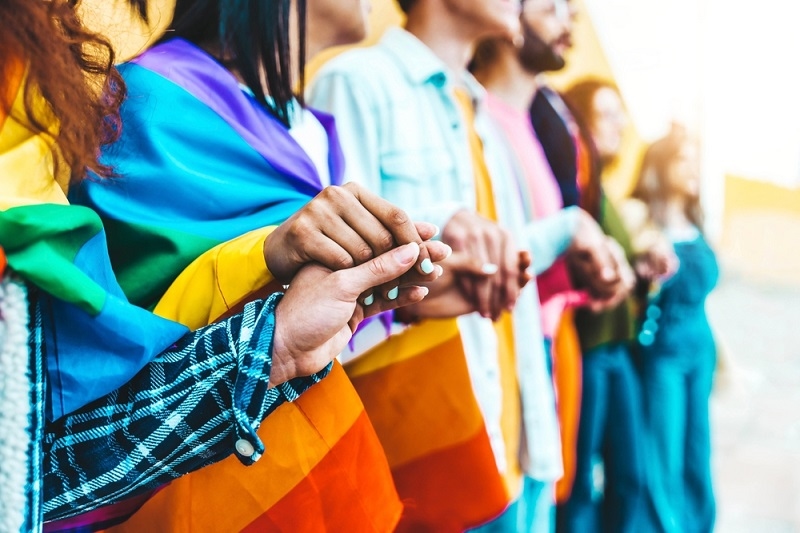Embracing Fluidity: Guide to Understanding Gender Identity

Gender fluidity is a concept that encompasses changes in a person's gender expression, identity, or both over time. Unlike traditional understandings of gender as a fixed attribute, gender fluidity recognizes that gender can be dynamic and evolving. This fluidity can manifest in various ways, from shifts in gender identity (how one perceives themselves in terms of gender) to changes in gender expression (how one outwardly expresses their gender through clothing, behavior, and other means).
Understanding Assigned Sex at Birth
At birth, individuals are typically assigned a sex based on physical characteristics. This assignment is referred to as Assigned Female at Birth (AFAB), Assigned Male at Birth (AMAB), Assigned Intersex at Birth (AIAB), or Assigned Gender at Birth (AGAB). For many, this assigned sex aligns with their gender identity, known as being cisgender. However, for others, their gender identity does not align with their assigned sex, placing them under the broader transgender umbrella, which includes identities like non-binary, genderqueer, and genderfluid.
What Being Genderfluid Means
Being genderfluid means having a gender identity or expression that is not fixed and can change over time. For example, a genderfluid person might feel more masculine on some days and more feminine on others, or they might not identify with any gender at all at times. Their gender expression can vary accordingly, with changes in clothing, hairstyle, or other forms of presentation to align with their current gender identity.
Exploring Gender Expression
Gender expression is the external manifestation of one's internal gender identity. It's how a person chooses to express their gender to the outside world, which can include clothing, hairstyle, voice, body language, and more. For genderfluid individuals, this expression might vary significantly. One day, they might dress in a way that's traditionally seen as feminine, and the next day, they might choose a more masculine presentation. This variability is a key sign of being genderfluid.
Assessing Feelings About Assigned Sex
Understanding one's feelings about the sex they were assigned at birth is crucial in exploring gender fluidity. If an individual feels discomfort, disconnection, or dissatisfaction with their assigned gender, it could indicate a genderfluid identity. Reflecting on these feelings can help individuals understand their gender identity more deeply.
Observing Changes in Gender Expression and Identity
Self-observation is vital for those exploring their gender fluidity. Noticing how one's gender expression and identity change over time can be a clear indication of being genderfluid. This might involve tracking feelings and expressions over days, weeks, or months to see patterns of fluidity. Self-observation in gender fluidity is key, and in cases of distress, seeking LGBTQ suicide prevention resources is a vital step towards well-being.
Pronoun Preferences and Genderfluidity
Pronouns are a significant aspect of gender identity. For genderfluid individuals, pronoun preferences might change along with their gender identity. Some might prefer a mix of pronouns, use all pronouns, or choose specific sets of pronouns at different times. This flexibility in pronoun use is often a part of the genderfluid experience, reflecting the fluid nature of their gender identity.
Understanding gender fluidity involves recognizing the dynamic nature of gender identity and expression. It's about acknowledging that gender is not necessarily fixed and can vary over time. For those who identify as genderfluid, this means embracing a spectrum of gender expressions and identities, and understanding that their experience of gender is valid and unique. Also, understanding gender fluidity is crucial in addressing issues like LGBT discrimination lawyer services, ensuring fair and knowledgeable representation.
Gender Expression as a Key Indicator
Gender expression is often a significant indicator of one's gender identity, particularly for those exploring gender fluidity. It involves how individuals present themselves to the world, including their choice of clothing, hairstyle, and overall style. For genderfluid individuals, clothing and style preferences can vary greatly, reflecting the fluid nature of their gender identity. Encouraging self-reflection on these preferences can be enlightening. For instance, feeling more comfortable or authentic in different types of clothing on different days can be a sign of genderfluidity. Diverse clothing choices, ranging from traditionally feminine to masculine and everything in between, can point to a fluid understanding of one's gender.
Embracing the Genderfluid Label
Identifying with the genderfluid label can bring a sense of relief, validation, and freedom to many. It allows individuals to recognize and accept the fluid nature of their gender identity. However, understanding whether this label fits involves deep self-exploration. It's about reflecting on personal experiences with gender and considering how the label aligns with these experiences. Embracing the genderfluid label can be empowering, as it provides a language to describe feelings and experiences that might have previously been difficult to articulate.
The Fluidity of Gender Identity
Gender identity is not static; it can evolve over time. This fluidity is a normal and valid part of many people's experiences with gender. Changing gender identification is not uncommon and should be seen as a natural aspect of exploring one's identity. Recognizing this fluidity helps in understanding and accepting the diverse ways in which people experience gender.
Self-Questioning to Understand Genderfluidity
Self-questioning is a crucial step in understanding gender fluidity. Questions like "Do I feel comfortable with the gender I was assigned at birth?", "How do I feel when I express myself in different ways?", and "Do my feelings about my gender change over time?" can help individuals explore their gender identity. Reflecting on these questions encourages introspection about one's gender expression and identity, aiding in the journey of self-discovery.
Changing Names and Pronouns
For many genderfluid individuals, changing names and pronouns can be an important step in affirming their gender identity. Names and pronouns that align with one's gender identity can significantly impact their sense of self and well-being. This change can be a powerful way of expressing and validating one's gender fluidity to themselves and the world.
Coping with Gender Dysphoria
Gender dysphoria can be a challenging aspect for those exploring their gender identity. It's important to develop healthy coping mechanisms, such as engaging in activities that affirm one's gender identity, seeking support from understanding friends and family, or speaking with a therapist. Accessing resources and communities that offer support and understanding can also be beneficial.
Conclusion: There's No One Way to Be Genderfluid
It's essential to recognize that there is no single way to be genderfluid. Each person's experience with gender fluidity is unique. Encouraging readers to find their path in gender expression and identity highlights the importance of personal exploration and acceptance. Embracing one's journey with gender fluidity is key to finding comfort and authenticity in one's identity.























